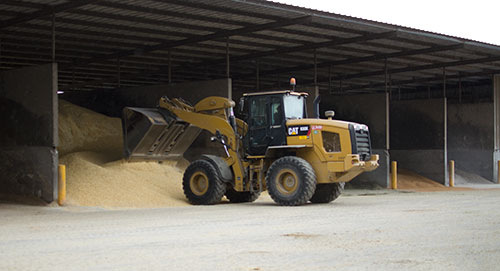
The feed center of a dairy farm can be equated to the kitchen of a popular restaurant operating anywhere from a few hours to all day. As it grows and changes, it will be judged on its ability to run smoothly and meet the expectations of its customers.
At the recent Large Herd Dairy Management Conference in Illinois, Joe Harner described the feeding environment as a transitional period. The Kansas State University department head of biological and agricultural engineering suggested the next 10 to 15 years will witness changes in feed center design to mirror the growing importance of monitoring what comes in and what is fed out.
"I don't like the word shrink, and yet we use it because we haven't come up with something better," he said. "It's a substantial loss, and no matter how hard you try to quantify it, it's only a guess."
Working to quantify this loss of efficiency transcended many of the changes Harner predicted in feed storage design. He said, gaining efficiencies and accounting for environmental impacts will shape the future of this area of the farm.
What are the 10 things Harner thinks will change the way we store and feed cows?
- 1. Continued higher milk production
2. Robotic milkers
3. Improved mixer accuracy with smaller weight units
4. More focus on management of the feed center
5. Diet environmental accountability of what goes in and what comes out
6. Fewer and likely different by-product feeds
7. Facility design limits with mixer equipment size
8. Cows relocating outside of the 40° to 50° latitude where most dairy cows live
9. Focus on reducing the environmental footprint
10. Feed ingredients accountability
(c) Hoard's Dairyman Intel 2016
May 9, 2016








